
“One doesn’t come to Italy for niceness, one comes for life,”
– Miss Lavish in A room with a View by author E.M Forster
We were swept in a herd of tourists mid-September in Venice, each seeking out a truly local experience – the finest Amarone della Valpolicella and grandmother’s homemade cicchetti. The herd walked underneath a drab, white flag limply strung across a balcony window, seeming to quietly revolt against the status quo: + Residenti, – Touristi.
A UNESCO World Heritage site since 1987, Venice narrowly missed the mark to be added to the list of 56 world heritage sites in danger in September 2023. According to The Art Newspaper, Italy showed its commitment to protecting Venice by investing 6.5 billion euros in protective flood measures and housing throughout the city. Plans have also been put in place to mitigate the effects of mass tourism, including a ban on large cruise ships docking in the lagoon and, more recently, the introduction of a €5 tourist tax for external visitors.
Venice is a victim of its own success.
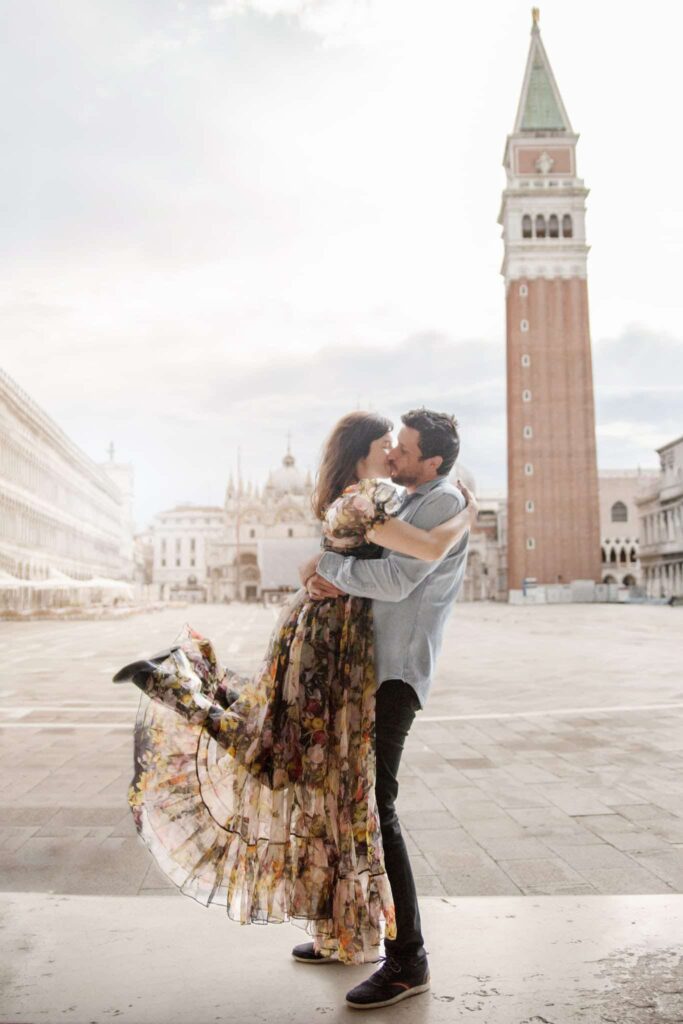

Portraits by Giada Frigerio
And I, like the roughly 30 million tourists who flock to Venice each year, do attest that there is nowhere in the world quite like it, neither when experiencing the city from the ground, nor when viewing it from the sky. Looking below the clouds while flying into Venice, the Adriatic Sea seems to engulf surrounding lands, while nibbling at the corners of a 21st century Atlantis.
In search of espresso, we crossed over one of Venice’s 391 bridges to find a cafe that looked to be avoided by tourists. The Italian barista was mid conversation with one of the gentlemen standing at the coffee bar. We waited in a short line, while their conversation carried on. She giggled. He smiled. The line of customers grew ever more annoyed. I sat down to bide time, joined by a pigeon walking in between tables. The table was sticky from previous coffees, perhaps from the day before. I claimed a spot by the window, overlooking an employee trying to repair the roof whilst standing on a teetering wooden ladder.
“Eh….la fortuna!” he shrugged.

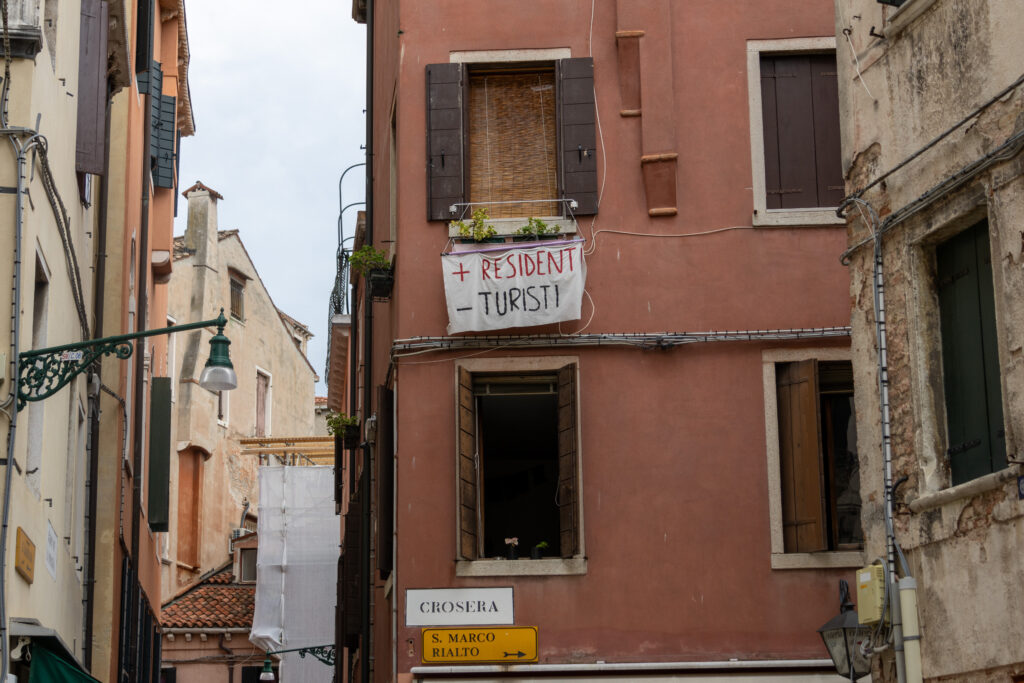
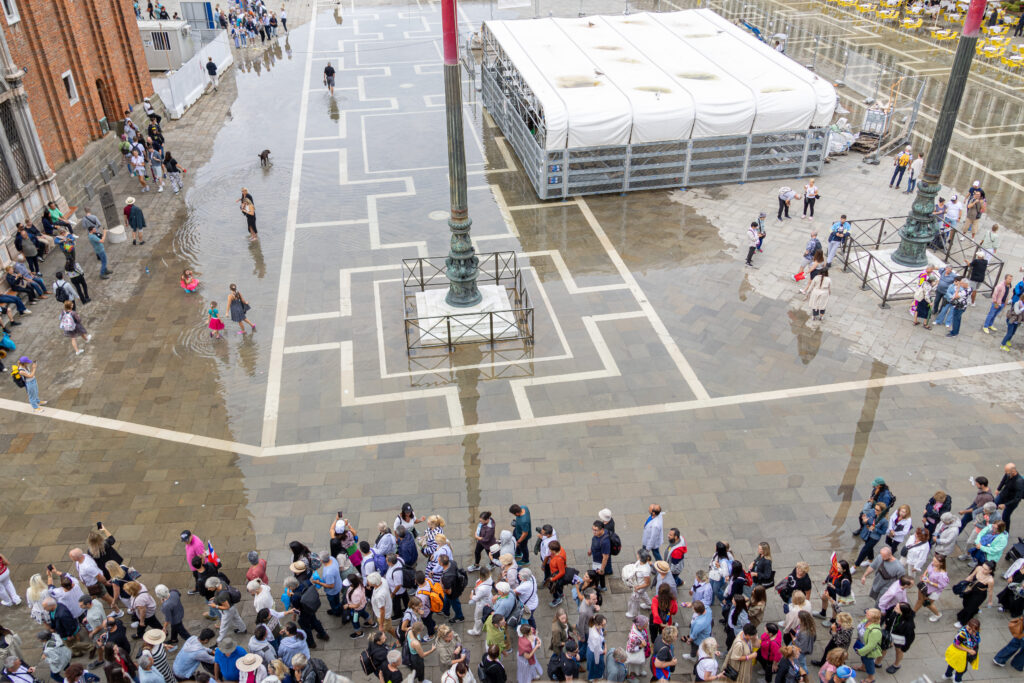
San Marco
After gobbling sugar coated cornetti and sipping capuchinos, we returned to the cobblestone walkway that seemed to be a pilgrimage to St Mark’s Square, passing between two large columns adored with guardians who are said to protect the city, separating the piazza from the lagoon. To the right Saint Theodore atop a slayed dragon, former patron of Venice, and to the left a winged lion representing Saint Mark, Theodore’s successor. In the Middle Ages and Renaissance, the space between the two Venetian guardians were host to beheadings and burnings, the victims facing their last moments with their backs turned to the sea, eyes towards the clock tower showing signs of the zodiac and phases of the sun and moon. Today locals are superstitious to walk between the columns, attributing it to misfortune, of only which we learned after passing through.
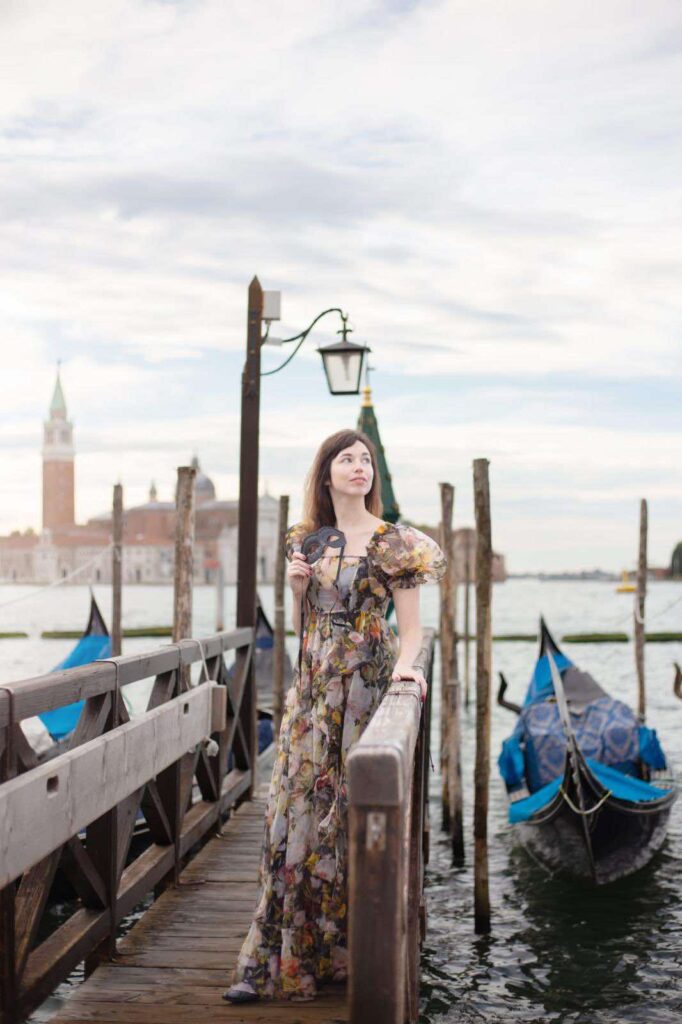

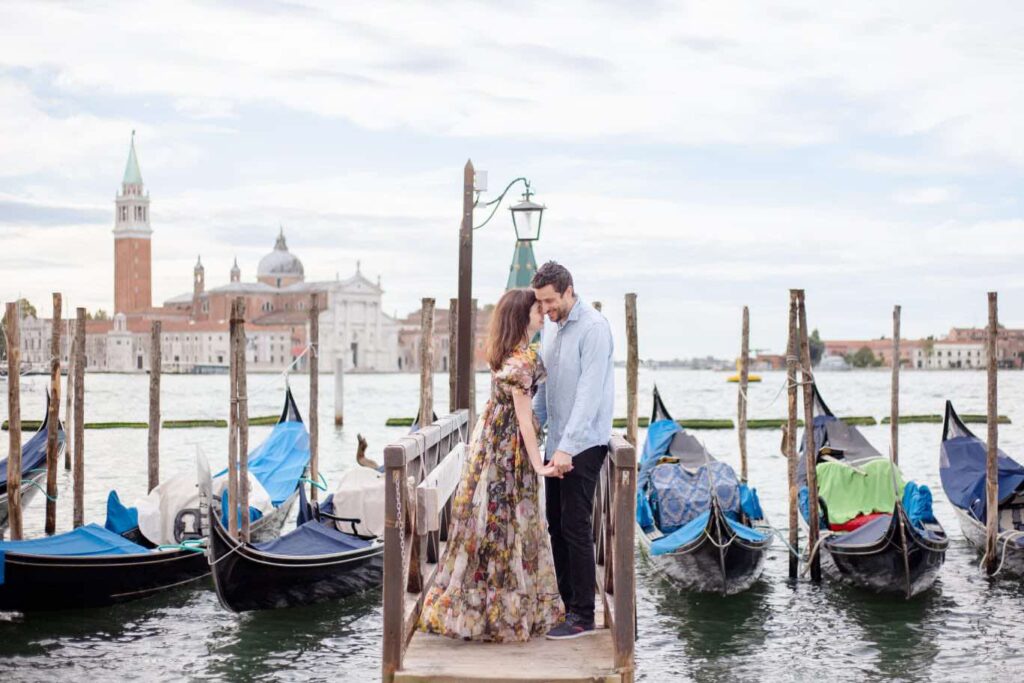
Portraits by Giada Frigerio
We joined the early morning line awaiting entry into Saint Mark’s Basilica, standing on a footbridge to avoid acqua alta, or the water slowly rising in the square due to the high tide in the lagoon. An app helps Venetians monitor the high and low points of the tide throughout the day. Tourists began to capture portraits standing in rain boots in the middle of the piazza, smiling as the water gradually rose from below. We reached an entrance illuminated in gold- a structure influenced by Byzantine art and architecture similar to that in Constantinople, with domes resembling those in the Middle East. The Basilica, of whose ornate décor took four centuries to complete, is home to the remains of Saint Mark, who is said to have written the Gospel of Mark in the New Testament of the Bible. Today the crypt that holds Saint Mark’s relics hosts wedding and baptism celebrations.


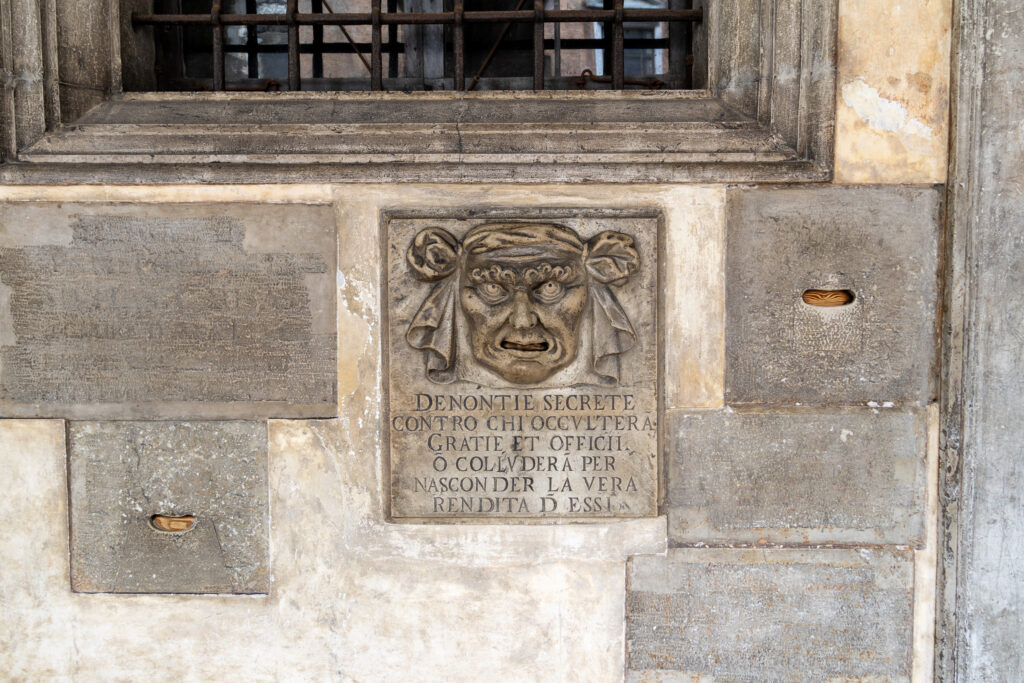
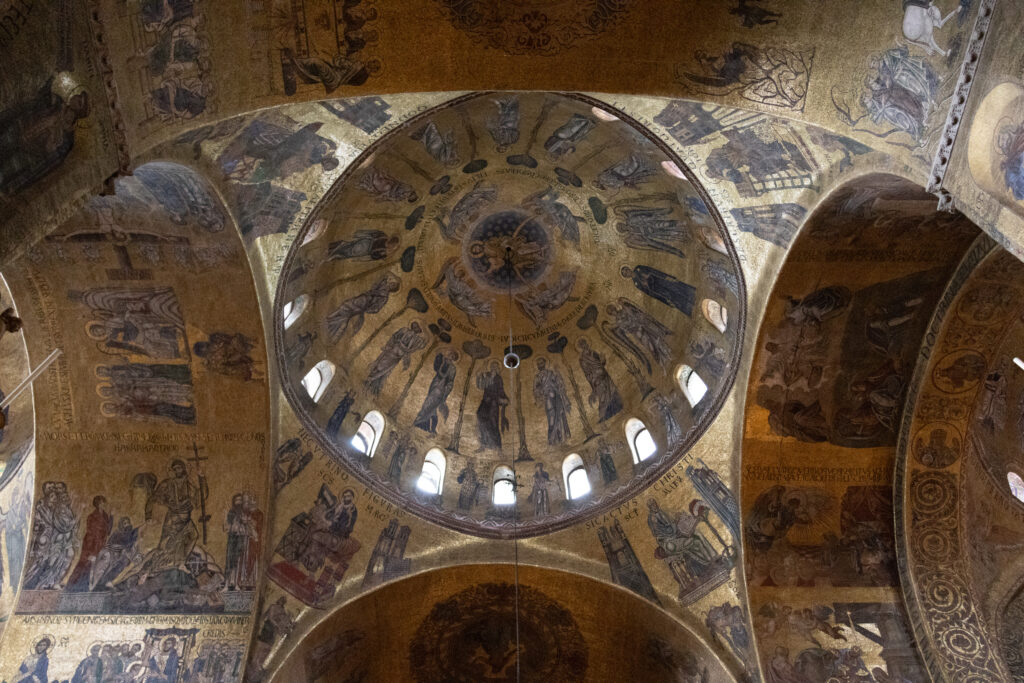
Saint Mark’s Square is, in every sense of the word, spectacular. I felt called to see it empty, waking up at 6 am Saturday morning to find it stranded aside for a few pigeons and seagulls. The café employees were cleaning off tables and setting out chairs for tourists ready to pay 12 euros for espresso at the historic Caffè Florian, as gentlemen began transporting their rolling kiosks stocked full of Carnival masks, feather quills and gondola magnets to the center of the piazza. A few early risers made an appearance as the sun rose, primarily those getting in an early morning run, perhaps to redeem themselves after a night rich in carbohydrates.
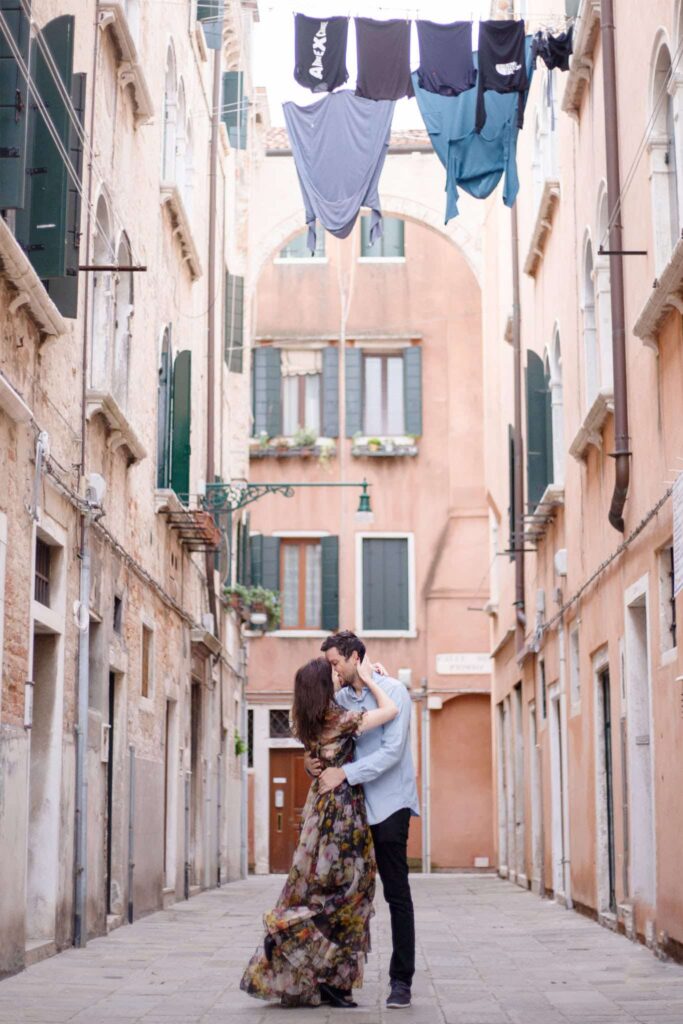

Portraits by Giada Frigerio
Cannaregio
“I’m Venetian, I was born on a boat,” our instructor Anna shared as we hopped in a wooden “shrimp-tailed” boat to begin a rowing lesson with Row Venice throughout the canals in Cannaregio, Venice’s northernmost district.
A practice traditionally handed from father to son since the 11th century, Row Venice is a non-profit organization that empowers women to row. To this day, the art of rowing a gondola remains a male-dominated profession. The BBC’s travel show published a video in 2022 making note of only one licensed female gondolier in the city, Giorgia Boscolo, who broke through a tradition of nearly 9,000 years.
As Anna began showing us how to hold the oar and move our body weight to gain speed, a man wearing loafers and carrying his morning newspaper walks by, speaking to her in Italian.
“That’s my dad,” she says sheepishly, cheeks turning red.
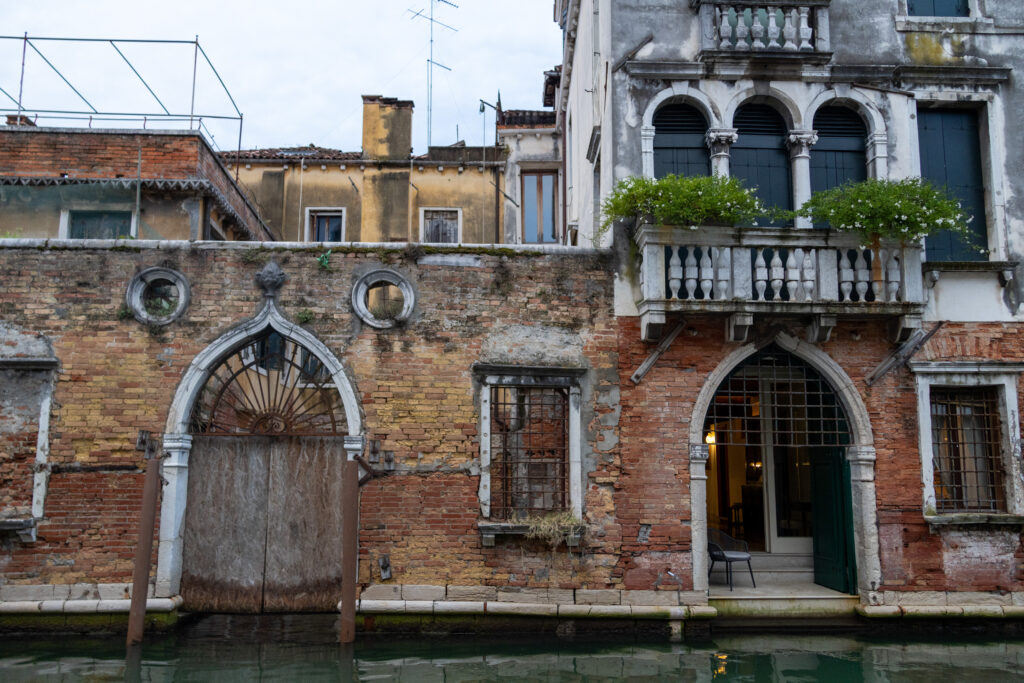

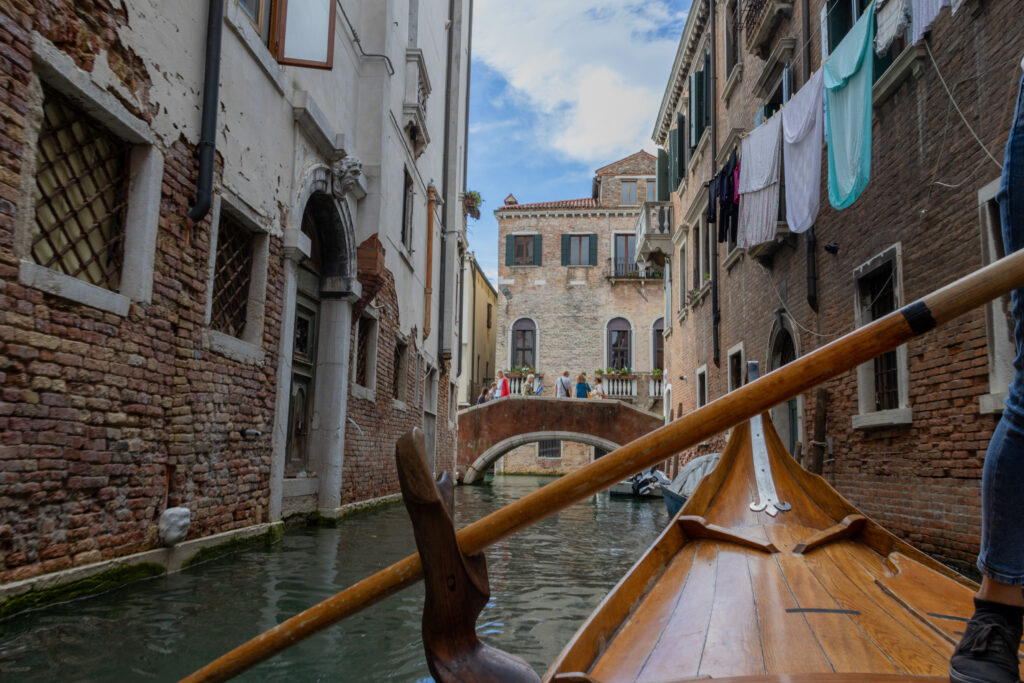
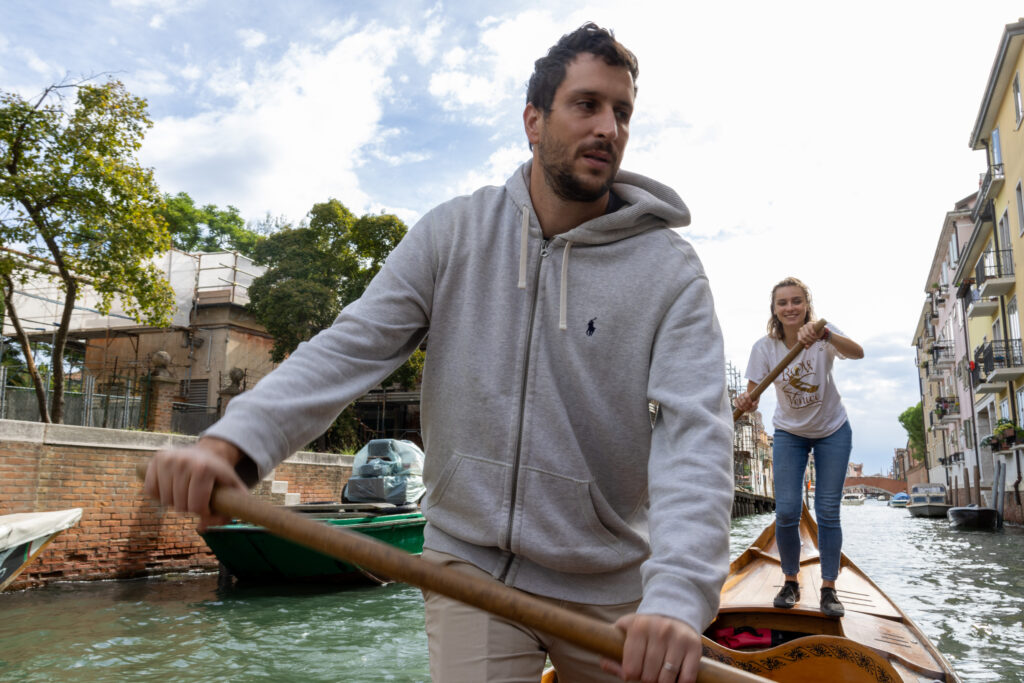
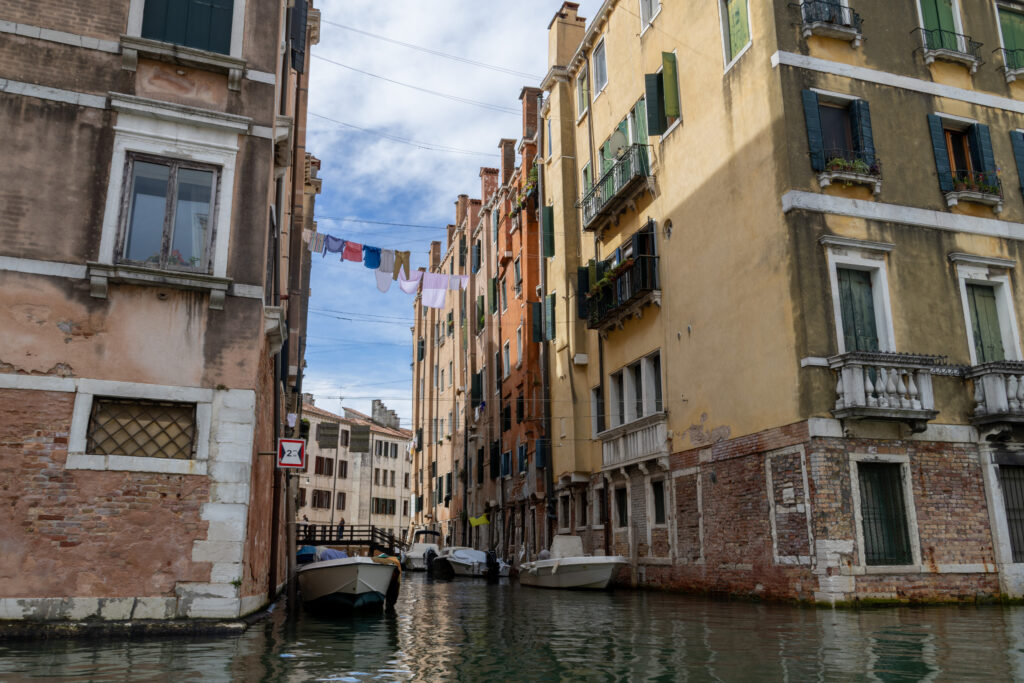
The district of Cannaregio feels like its own city, a Venice less traveled. The streets in the early morning were filled with school children, excitedly chatting outside before class began. Elegantly dressed seniors wearing tailored pants and wool coats seemed to have a heated discussion on a public bench in the neighborhood square, hands moving in the air as if in a theatrical performance, while young children played ball with an imaginary goal post in front of a 15th century church.
“Ciao!” other boats greet us as we cross paths. Anna shouts “Oy!” each time we turn corners, as the wooden craft lacks modern day mechanisms to alert those who may not see us. We carefully row forward, trying to avoid making contact between the oar and parked boats in front of homes, serving as family vehicles. In this city, life happens on the water, including the fire department and ambulance arriving by boat.
By night, the canal is full of life, with bars and restaurants packed full of students sipping Aperol spritz and wine outside. What I find particularly unique is that most are enjoying the aperitivo while standing, often setting their glasses on small bridges or on the edge of the canal.
While taking a 2-euro traghetto across the Grand Canal, an elderly man stood up throughout the ride across the rocky water. “You can tell when someone is from here,” he shared, “because Venetians always stand up.”
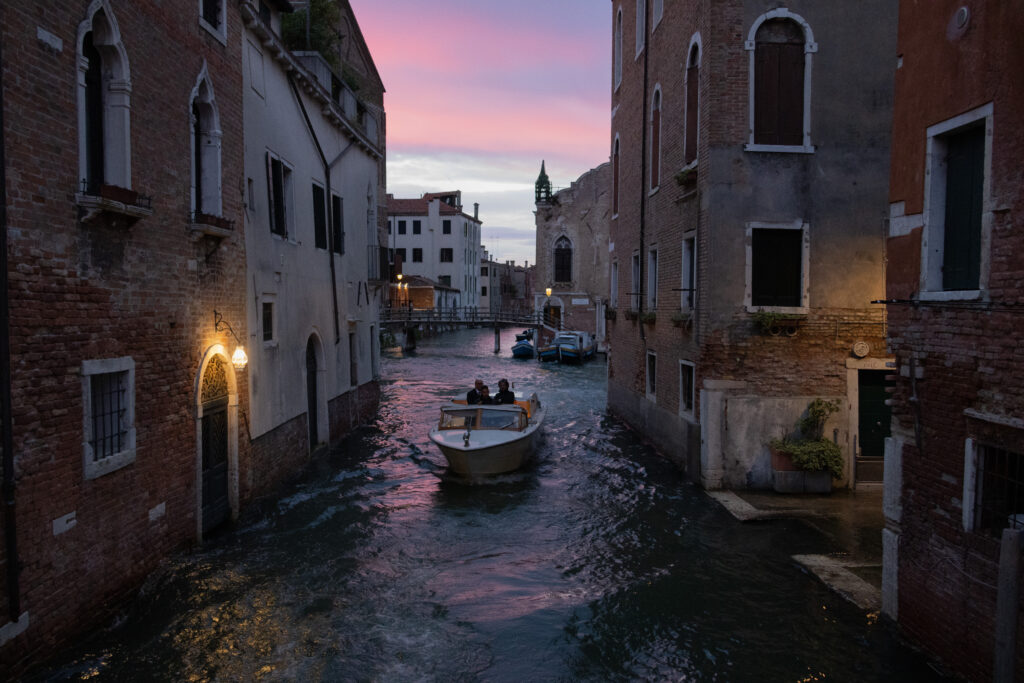
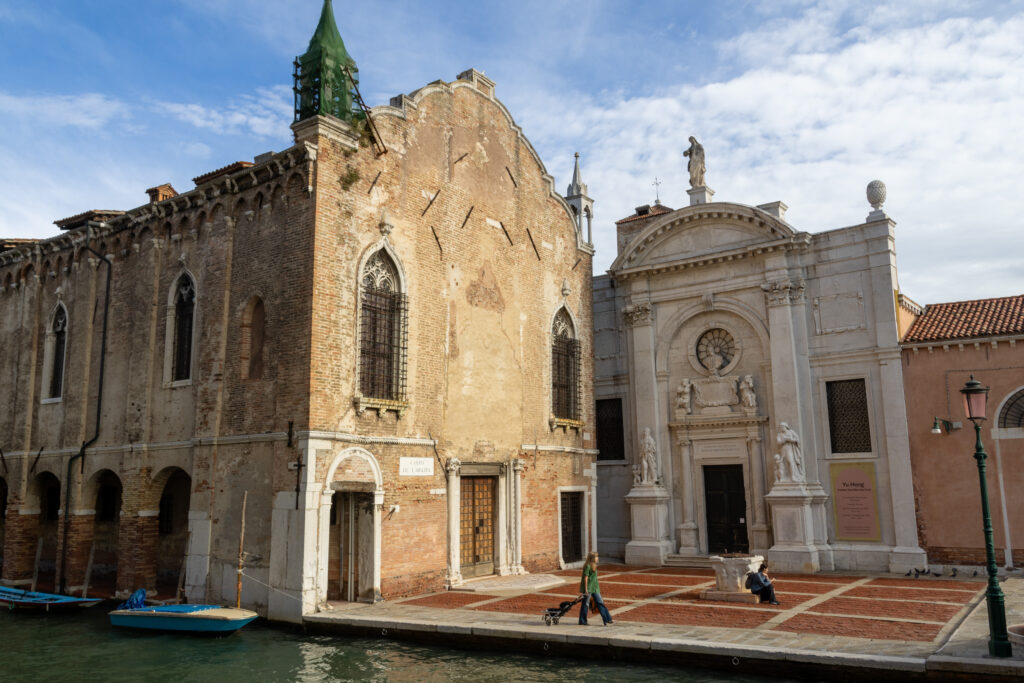

Dorsoduro
As the sun rises, the wooden Accademia Bridge connecting San Marco to the Dorsoduro district gradually fills with photographers setting up their tripods to capture the first morning boats across the Grand Canal underneath what appears as a watercolor painted sky. The view from the Accademia Bridge overlooking the Basilica of Santa Maria della Salute is recognized even before setting foot in Venice, famously pictured on postcards.
We stumbled upon the Squero San Trovaso, a shipyard where craftsmen repair and build gondolas by hand. Across the canal facing the shipyard we came across the Osteria al Squero, noted in several guidebooks and subsequently filled with tourists on a quest for homemade cicchetti, toasted bread with a vast array of spreads, best accompanied by a glass of wine. A few steps down we stumbled upon the less crowded Cantine del Vino già Schiavi. Surrounded by wine racks, we peered into the glass counter to see paper plates with colorful cicchetti on display: egg and truffle oil, gorgonzola and walnut, brie cheese, olive tapenade and tomato, sardine and egg. We ordered 12 to share. An Aperol spritz for him, a prosecco for myself.
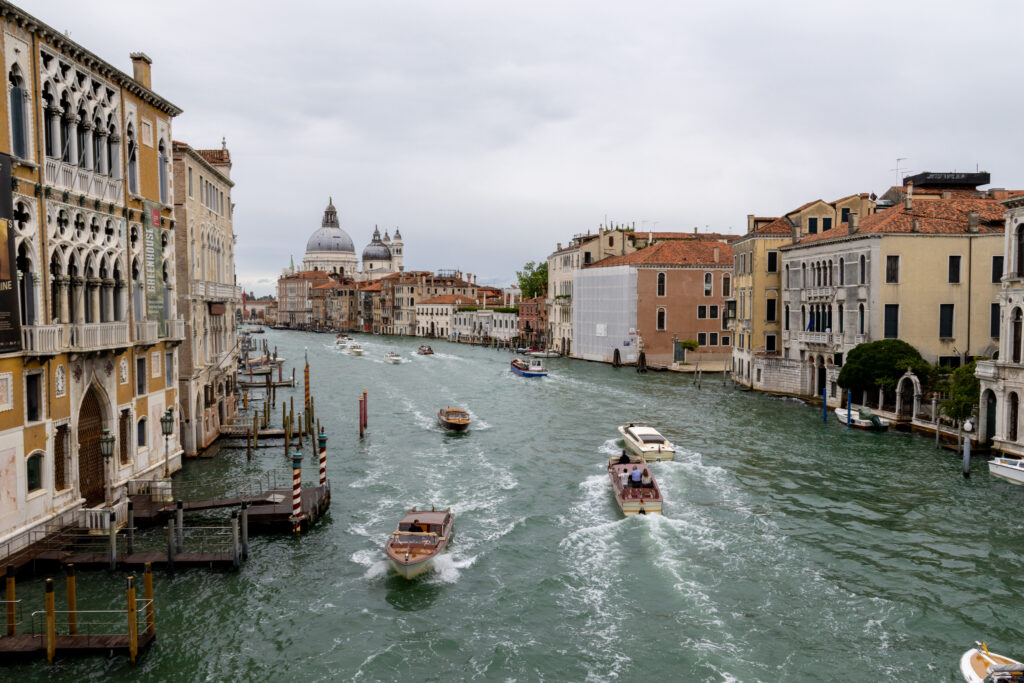
The manager of Cantine del Vino già Schiavi, Alessandra De Respinis, has been working over the counter for well over 60 years. Opened in 1944 by her father-in-law, she today prepares cichetti with her sons, while her brother takes care of administration. Something about Alessandra reminded me so much of my grandmother, who ran a bar in small town Iowa. Alessandra seemed to know nearly everyone who stopped in, and she came across as a highly respected figure. A video that captures the atmosphere of the Cantine del Vino già Schiavi may be found here.
Returning home, my first stop was at the grocery store for a bottle of valpolicella and fresh gorgonzola (the latter does not come from Venice per se, however the desire for Italian food remains).

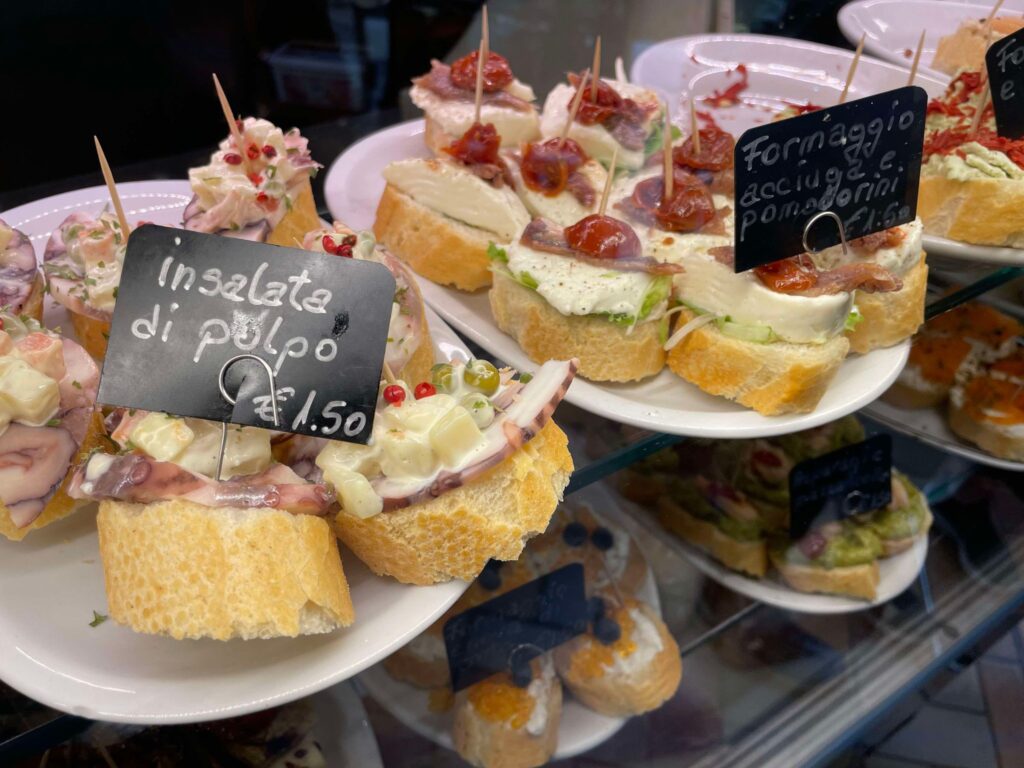
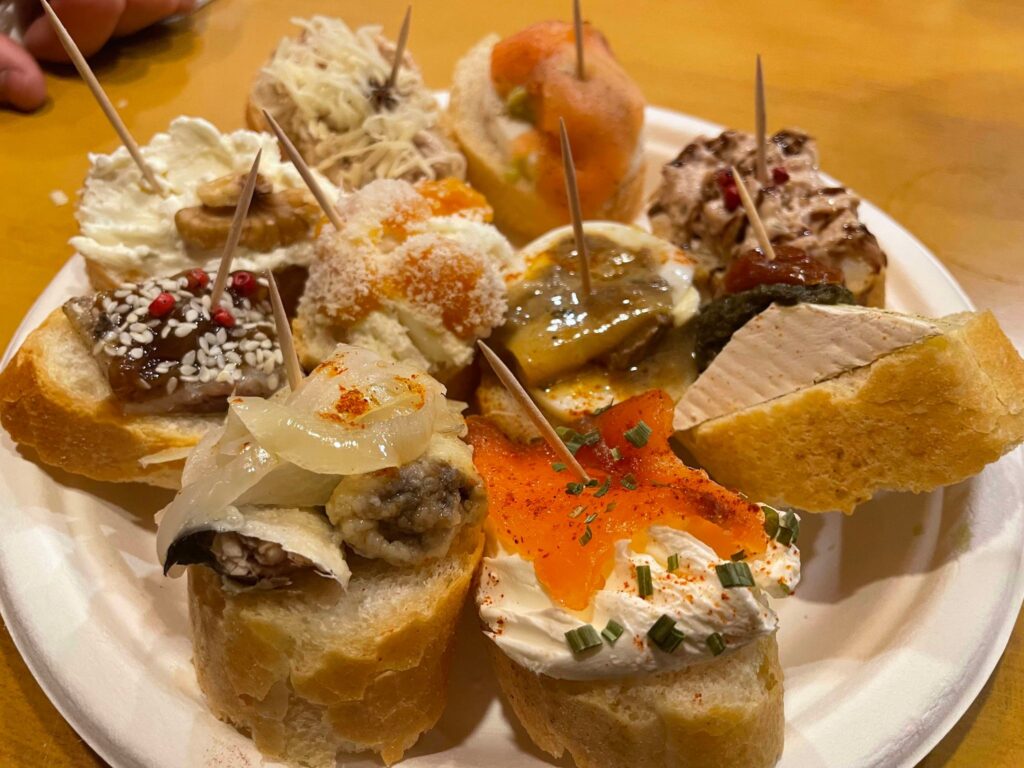
Repetto, F. (2022, February 11). Alessandra, da 62 anni cicchetti e ricette alle Cantine del Vino: «Ogni mattina mi alzo e invento». https://www.ilgazzettino.it/nordest/venezia/alessandra_de_respinis_cicchetti_famiglia_gastaldi_cantine_del_vino_enoteca_osteria_ricette-6493201.html

Aw, loved the reference to Grandma! She would love that!
Ciao Babykins!
https://youtu.be/_8ZktG3aD6g?si=bRNKit94NnJRXjYN
There is a legend which says that if two lovers – kiss – in a gondola, under the Bridge of Sighs, at sunset, when the bells of the Campanile toll – they will love each other – forever.
Love you mama (and this movie!)
Ah to be homesick for a place I’ve never been. Venice sounds magical!
We shall go together next time you are around!